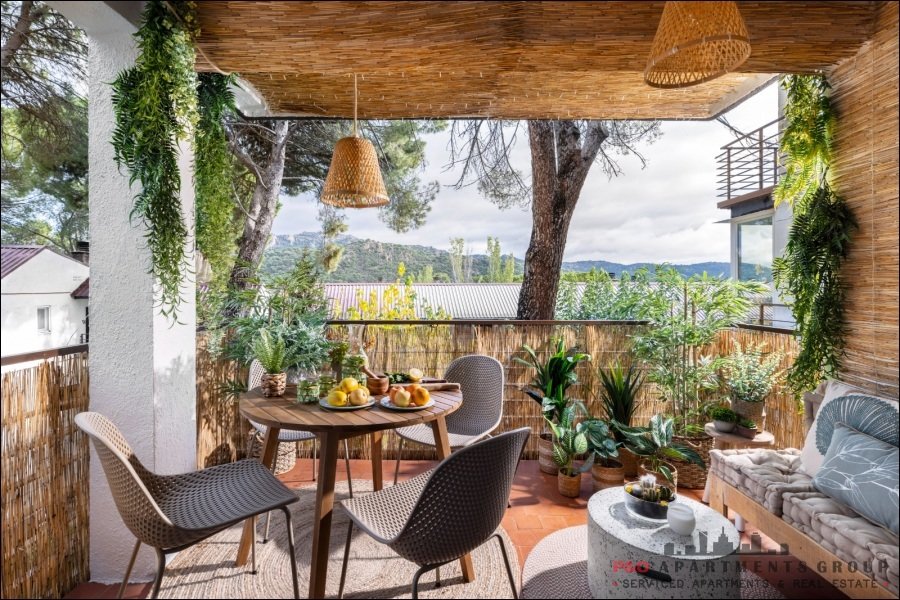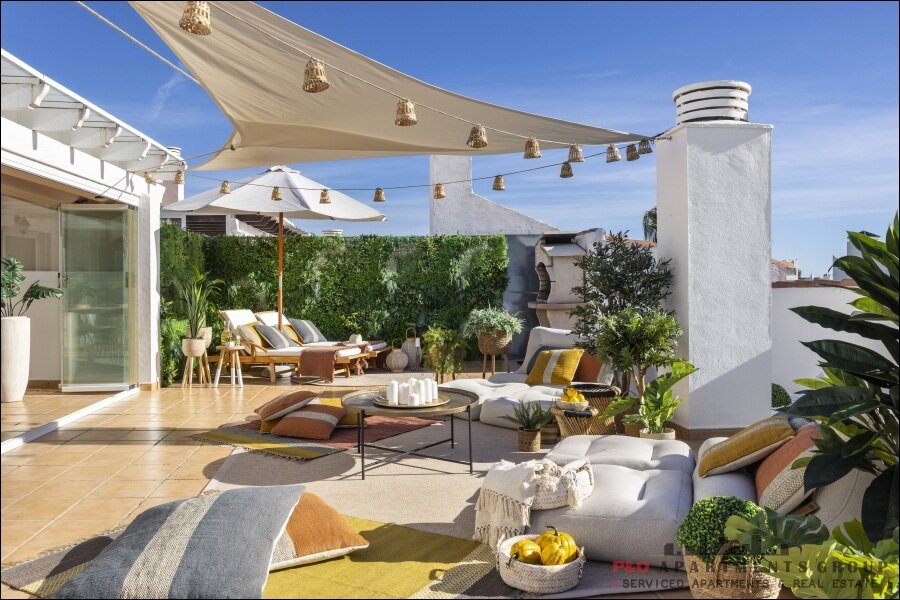Officially declared historical-artistic gardens in 1943, they are now also recognised as an Item of Cultural Interest. In spring 1990, the gardens were taken over by Malaga City Council, which opened them to the public on 21st June 1994.
more information : www.laconcepcion.malaga.eu

A ceramic representation of the historical garden
A brief history

Pilar and Mercedes Heredia Loring on the iron footbridge
1855-1990
The origins of La Concepcion can be traced back to the merging of several estates located to the north of the city of Malaga. These were home to olive and almond trees and possibly vines, though the citrus trees were the most numerous. The gardens’ creators were Jorge Loring Oyarzabal and Amalia Heredia Livermore, who purchased the land on which they stand in about 1855. According to written records of the time, they had originally come up with the idea of a garden seven years earlier while on their honeymoon, which saw them embark upon on a tour of Europe. The Marquis and Marchioness’ comfortable economic situation coupled with their first-hand experience of some of Europe’s finest gardens and their commercial dealings abroad enabled them to cultivate the most exotic of plant species from around the world. In order to ensure that their dream came to fruition, they enlisted the services of a French gardener, Chamousst, who selected and planted the gardens’ flora, an endeavour for which he was awarded a number of prizes, as witnessed by newspaper reports of the late XIX century.
La Concepcion quickly earned itself a fine reputation throughout Europe, though not for its exuberantly beautiful gardens; the source of this renown was in fact the magnificent collection of archaeological remains on display in the Loring Museum, a small, Doric-style building erected on the site of a Roman mosaic discovered in Cartama depicting the feats of Hercules. For many years, the Lorings strove to restore all of the archaeological remains that they encountered. Without doubt, the most significant of these was the Lex Flavia Malacitana, a bronze piece bearing the Roman laws that governed Malaga in the year 80 AD which now resides in the National Archaeology Museum.
Following the death of its owners and the family’s economic decline, La Concepcion was bought in 1911 by a married couple from Bilbao, the Echevarria-Echevarrietas, who extended the gardens by creating a number of new areas.
1990-2006
The construction of El Limonero reservoir saw these 49 hectares of land divided into two sections by a road: 26 of these were declared green belt, with the remaining 23 enclosed hectares making up La Concepcion Historical-Botanical Gardens.
Once the necessary infrastructure and upgrading work had been carried out, it was opened to the public in 1994 with two main aims: the conservation and improvement of the historical garden and the creation on the estate of a botanical garden (a cultural, educational and scientific centre connected with the world of plants with the majority of its species on display in living collections).
Historical heritage

A Roman statue in the Loring Museum
In addition to its botanical riches, La Concepcion boasts an equally-significant historical heritage. In the XIX century, La Concepcion served as a meeting point for a whole host of illustrious figures of the time. Politicians, artists, aristocrats and the noble Malaga bourgeoisie all frequented its gardens. As a result, a number of distinguished buildings were erected here: the magnificent Stately Home, the cypress house, the administrator’s house, the gardener’s hut and the schoolhouse; two iron greenhouses; a large arbour; fountains, footbridges, flights of steps, a delightful viewpoint, and, most impressive of all, the Loring Museum, a small, Doric-style building which housed the archaeological discoveries unearthed in the excavations financed by the estate’s first owners. Some of these archaeological pieces are on display around the museum, having recently been relocated as part of a project by the architect Jose Fernandez Oyarzabal.
San Telmo Aqueduct

San Telmo Aqueduct
The water supply of Malaga has been one of the most serious problems the city has had since ancient times. In 1782, at the request of Bishop Molina Lario, the architect Aldehuela Martin began working on the San Telmo Aqueduct, because the work of hydraulic engineering was considered very important in the eighteenth-century Spain.
Over 10 km of route from its outlet from the River Guadalmedina, with 33 bridges and 30 aqueducts, reaching its destination by gravity.
In 1788 he authorized the supply to La Concepción. Here one can see part of the branch that supplied water to the farm prior to the garden.
more information : www.laconcepcion.malaga.eu
 English
English  Polski
Polski Español
Español Français
Français Italiano
Italiano Deutsch
Deutsch Українську
Українську
















